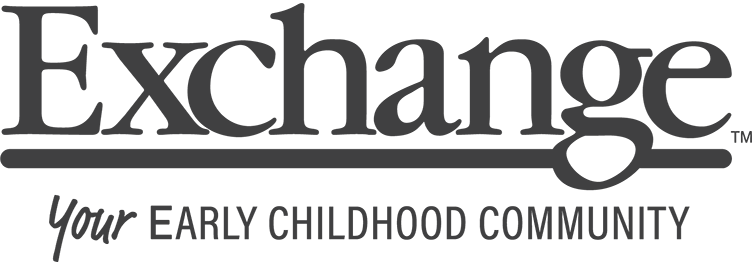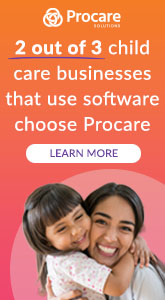Is your child care center charging the optimal amount for your services?
When it comes to pricing, there are many factors to consider, such as fees charged by competitors, staffing costs and the current status of your enrollment and finances. Fortunately, there are some good practices to help you develop or revise your fee structure to achieve your financial and enrollment goals.
Pricing can be a touchy topic when looking for tips from other child care providers. Instead of trying to get the scoop around town, check out these five best practices to help you ensure the price is right at your center. If you are evaluating your child care center’s fee structure, consider the following.
Set Prices with Staff-to-Child Ratio in Mind
The single largest cost for any child care program is staff, typically 45 to 55 percent of revenue. For almost all centers, the primary driver of staffing needs is the age of the children and the necessary staff-to-child ratio for a particular age range. For instance, some states require one staff member for every three infants in a center at a time.
Staff-to-child ratios vary by state (childcareaware.org). A good exercise is to calculate the staffing cost per child for each age range and compare this to your full-time tuition for that particular age group. Use the example chart below to take a look at how the percentage compares for each age range. (Table 1)

Table 1
If the percentage for some age ranges is very different from others, you are probably overcharging for some children and undercharging for others. There may be good reasons for this, but you should recognize it and know you have made a decision to subsidize the costs for one age group with the fees from another.
Managing staff-to-child ratios and collecting the data you need to adjust pricing around them is a complex task. To save time and avoid errors, consider investing in technology that can help you accomplish this more efficiently. When you manage your staff and child data through child care software that produces staff-to-child ratio reports, you can easily identify fluctuating staff needs so you can appropriately optimize ratios and charge accordingly. Child care software can help you analyze staff/child ratios based on the schedules for when the child is expected to attend and based on actual attendance (if the system offers a method of electronically tracking attendance).
Offer Flex Scheduling while Achieving Full-Time Equivalency
Flex scheduling can increase your enrollment and financial performance by allowing parents who need part-time care to benefit from your child care services without having to commit to a full-time schedule. You can offer this convenience to parents and support your center at the same time by adjusting pricing for part-time enrollment with full-time equivalency in mind.
ADVERTISEMENT
When factoring flex scheduling into your services, price higher per day for three-day enrollment than five-day enrollment. Similarly, you can offer morning or afternoon care at a cost that is more than half of the full day rate. For example, you could charge the following:
$300 per week for a toddler at full-time hours
$200 per week for a toddler at part-time hours (AM/PM or MWF/T+THU)
By adopting this pricing model, you would earn an additional $100 in revenue for every two children who are enrolled part time and be more likely to maximize your full-time enrollment.
While this revenue-boosting billing method is good for business, keeping track of children’s flex schedules and managing the associated staff scheduling with them is time-consuming.
Charge Extra for Special Activities
Would parents buy into initiatives that would bolster your program and boost revenue and lower costs at the same time? Create opportunities to drive revenue by offering parents services that would provide:
Convenience
Allow parents to pay for your services online and via mobile with electronic payment processing. This can also save you time on fee collection if your payments provider integrates with your child care software.
Increased Communication
Subscribe to a parent engagement app that enables you to stay connected to parents via mobile and send invoices, notes and updates, and photos of their children right to their smartphones.
Special Activities
Establish learning hours in the morning that pair playtime with educational exercises that will prepare children for school.
Healthy Snacks
A snack program gives parents one less thing to worry about, knowing their child has nutritious snacks on hand while they are in your care.
If adopted, these services can result in better experiences for the children in your care that lead to an increase in parent referrals. Not to mention, a creative suite of services baked into your rates will differentiate your child care center from neighboring child care providers.
Use Discounts and Promotions Strategically
Everyone loves a discount, so think about creating a fee structure that gives you wiggle room to:
Offer individual discounts to parents on the fence. The smallest price break can be the deciding factor between your center and the one down the street. If you can achieve FTE by accommodating discounted rates, consider making discounts part of your offerings.
Launch compelling promotional campaigns. Market your center’s services by advertising limited-time promotional rates and discounts. The deadline will create a sense of urgency and help fill open enrollment spots so you’re always operating with full classes.
Boost enrollment through bundle pricing. Give parents with more than one child a discounted rate when they enroll both children in your care.
The best part about evaluating your fee structure? The changes you make do not have to be permanent. The business of child care is always evolving, so the changes that make a difference today might not be as successful a year from now. But that is OK! By monitoring your business, you can see what is working and what is not in real time, and adjust your fee structure accordingly.
Emily Rose Patz is a Philadelphia-based writer who specializes in content centered around child care, early education, anad educational nonprofits for EZCare Child Care Management Software. She has authored a number of e-books including The Definitive Guide to Buying Childcare Software. You can download the guide at ezcaresoftware.com/buyersguide.
Related
ADVERTISEMENT












